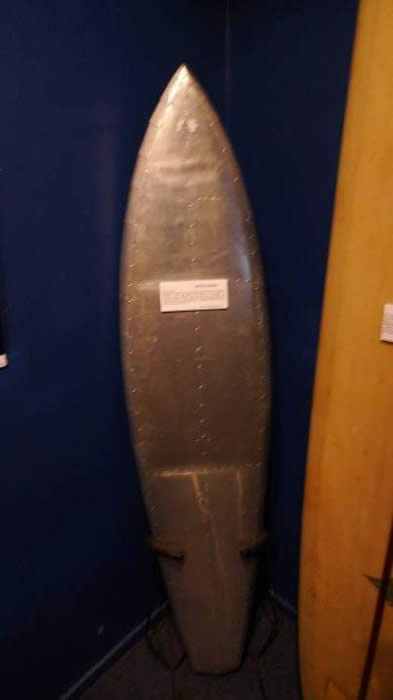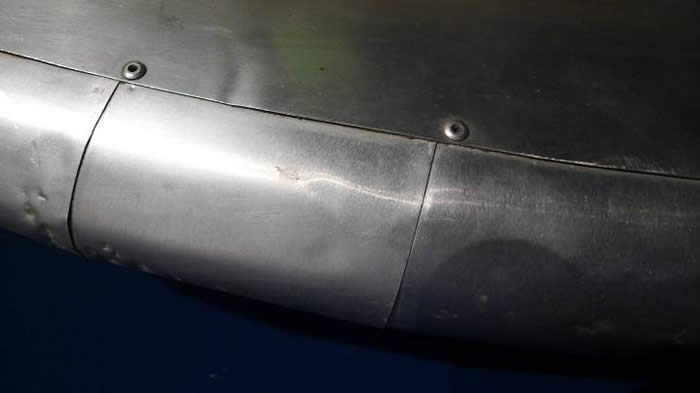Coming to this one late, alas, and fascinated -
As it happens, I own an English made aluminum rowing shell, roughly 27 feet long and a foot wide, made, I suspect, by all the Supermarine Spitfire builders who got laid off in 1947 or so. The transverse frames/stiffeners are made of an aluminum/ polyurethane foam/aluminum sandwich that was likely made up in big sheets and bandsawed to shape as need be, then glued into place with what appears to be an early polurethane foaming glue akin to the Gorilla Glue that we now know and love. The hull itself is made of a fairly hard aluminum sheet material with a coating that appears to have been applied at the factory.
27 feet long and yet I can pick it up easily with one hand. What’s really odd, though, is the tapered aluminum shafted oars that came with it, quite like the aluminum softball bats.
Meanwhile- forming the stuff. Big production, you’d go with stampings and heliarc ( TIG) welding, but for small runs or individual boards, I’d suspect that you could go with something formed ( compound curves and all) on an English Wheel ( see http://en.wikipedia.org/wiki/English_Wheel - a Really Cool Thing and how they made the sweet aluminum bodywork on XKEs and the like) and flanged edges that could be simply glued together.
Glued, you say? Yeah, there’s a line of welded aluminum workboats with aluminum plate watertight decks…but they don’t have anything like enough room under said decks to get in there and weld the deck plating to the deck frames. What did they do? Made the deck frames more or less ‘T’ shaped and put a marine caulking/adhesive on the wide tops of said frames and carefully set the deck plating on that. It holds up well and prolly would work out even better on the very light plating on an aluminum surfcraft.
There would be other issues to work out, definitely, stuff like how to keep the hull plating between frames from ‘oil canning’, but they’ve solved those problems on boats and aircraft already, it’s not, wait, yes, it IS rocket science, actually, but it’s been done and it works. .
Might make an extremely interesting project…if I only had 96 hour days…
doc…



